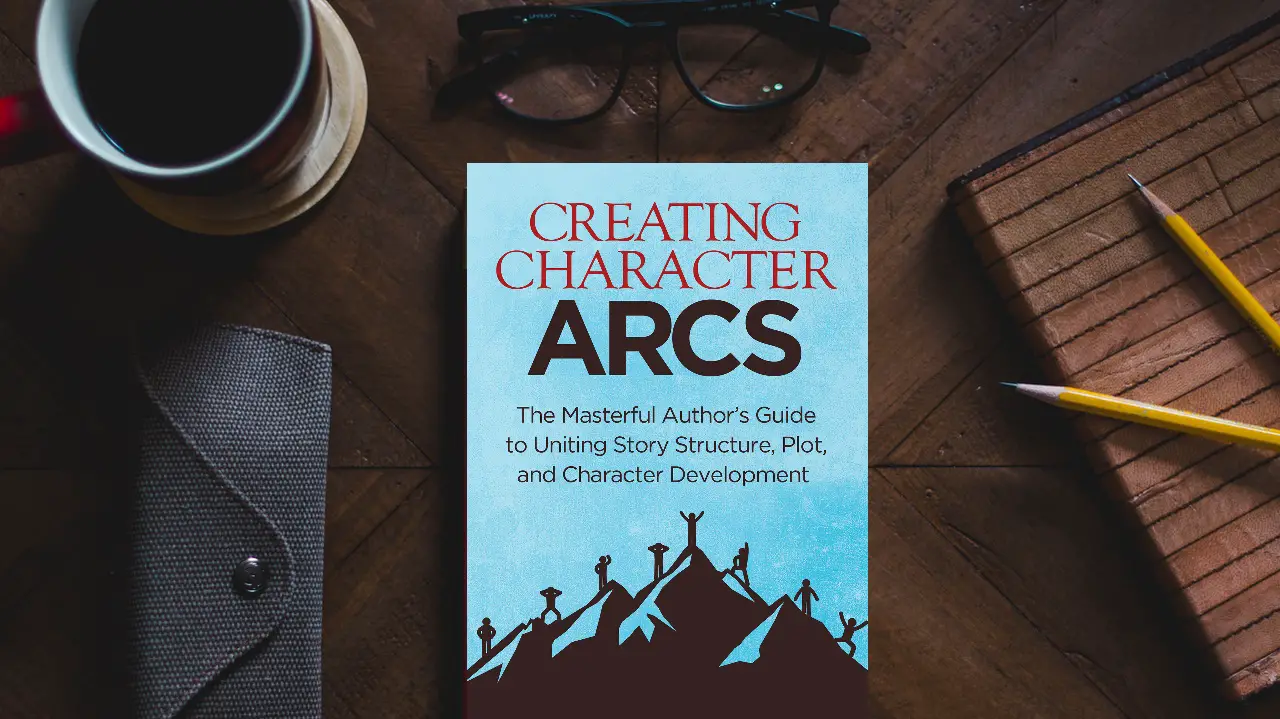Disclaimer: I received a free copy of this book in exchange for my honest review.
According to Writer’s Digest, K.M. Weiland runs one of the top one hundred writing sites, and she spends a lot of time on her blog giving advice to writers. Since I’ve followed her blog and read her books for several years now, I had high expectations for her latest book on fiction writing.
But with this book, Weiland matched and even surpassed my expectations.
In Creating Character Arcs, Weiland delves into the art of crafting character arcs and structuring a story around the protagonist’s character arc in a way that leads to deep themes. As Weiland points out, one of the key benefits of a strong character arc is how it unifies the story. Plot and character are too often viewed as opposing forces.
However, as Weiland writes:
“Nothing could be farther from the truth… Plot structure and character arc are integral to one another.”
With this in mind, Weiland describes how plot and character ought to align in order to create a thrilling character arc. She focuses on the positive character arc because it’s the most common one in literature and the one on which all other character arcs are based. In her study, she explains how a thematic arc is a war between a lie and a truth that a character must choose between, demonstrates how the truth can overcome the lie in the course of a novel, and uses a plethora of examples to show these principles in action.
Although she primarily concentrates on the positive character arc, she also discusses the flat and negative character arcs. Her threefold division of the negative arc is particularly helpful. As she explains, negative character arcs are derived from the positive character arc, and once you understand the positive character arc, you can more easily comprehend its variants.
I expected that the writing advice this book offers would be golden. What I didn’t expect was how much Weiland ties the character arc to the truths of human nature. The idea of a character arc isn’t just central to fiction. It’s a fundamental fact of human psychology, and Weiland expounds on this:
“Humans are survivors. We’ll do anything we can to move toward life, comfort, and peace. But we’re also self-destructive. We can focus so tightly on one aspect of survival that we sacrifice other elements… In other words, we lie to ourselves. But there’s always a reason for that lie.”
Because people always have reasons for telling themselves lies in real life, we as authors need to mimic this with our characters. We won’t be able to portray our characters convincingly until we understand their internal justification for the lies they believe. Weiland therefore not only unveils how to write powerful character arcs, but also strikes at the core of human wants and desires. Weiland is a Christian, and although she never mentions God, the influence of a Christian worldview emerges throughout the work.
I cannot recommend Weiland’s book enough. The book fulfills everything it promises and more, and I am sure it will become one of my regular writing resources when I’m plotting out a story. For anyone who wants to learn more about writing themes and compelling character arcs, this book comes with my highest recommendations.


Yes, this lady has some awesome stuff. Great review; thanks Josiah. 🙂
She does indeed!
I’ve taken Katie’s course on character arcs, but I’ve been contemplating getting this book as a handy reference. Her instruction is excellent.
Nice! I watched the first preview video of her course, and it seems like this book is very similar to the video scripts for that course, but has less information than the course has. Either way, I can certainly attest that it’s helpful to have a physical book to flip through when trying to review different concepts.
Okay, I NEED this book. 😛
Yes you do. 😉 It’s fantastic.
*adds yet another book to my list*
*looks up at the miles-high stack of books that must be on your to-read list at this point*
I actually have a separate book shelf for books I haven’t read yet if it tells you anything. xD
I believe it. =P I have a similar shelf myself which is currently pretty stuffed with books…